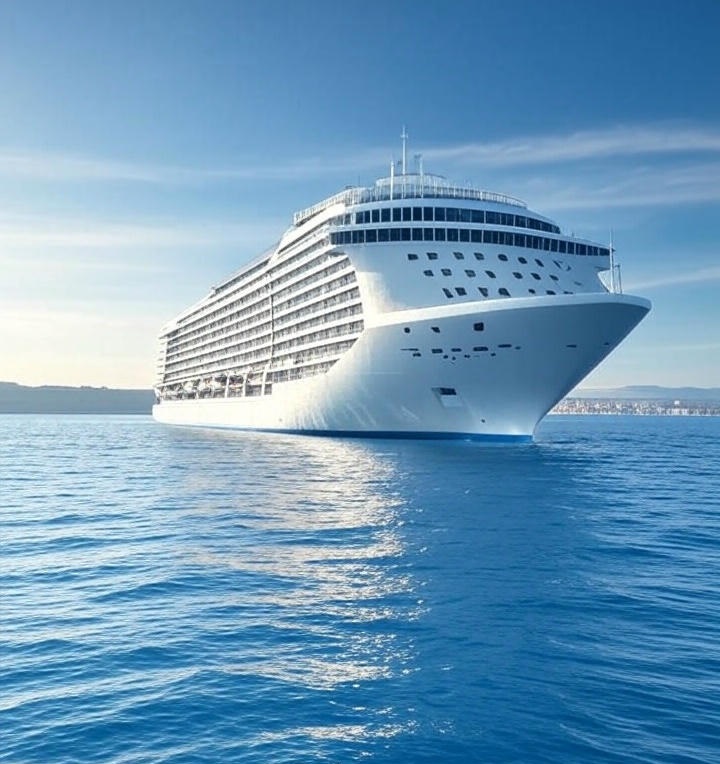
Stretching the Seas: Cruise Ships Get a New Shape
The cruise industry has always been about evolution—bigger ships, better experiences, and bolder innovations. But there’s a new trend that’s making serious waves: cruise ship stretching. While it may sound like something from a sci-fi movie, this technique is very real and dramatically transforming how cruise lines operate, grow, and deliver unforgettable voyages.
Let’s dive into what cruise ship stretching is, why it matters, and how it’s reshaping the high seas.
What Is Cruise Ship Stretching?
Cruise ship stretching, also called ship elongation or ship lengthening, is the process of cutting a cruise ship in half and inserting a new midsection to increase its length, capacity, and functionality.
Think of it like giving a cruise ship an advanced “growth spurt.” Engineers literally slice the ship open at dry dock, insert a prefabricated steel segment (often weighing thousands of tons), and weld everything back together. It’s a bold move that redefines maritime engineering.
Why Are Cruise Lines Stretching Their Ships?
Cruise ship stretching isn’t just about size—it’s about maximizing efficiency, boosting passenger capacity, and enhancing guest experiences without building entirely new vessels.
1. Cost-Effective Modernization
Building a brand-new cruise ship can cost over $1 billion and take several years. In contrast, stretching an existing ship costs significantly less—typically $70 to $250 million—and takes just a few months. This allows cruise companies to modernize their fleets faster and more affordably.
2. Increased Revenue Potential
A longer ship means more cabins, more dining areas, and more entertainment venues. This translates directly into higher passenger capacity and greater onboard revenue through food, excursions, and amenities.
3. Sustainability Advantage
In the era of green cruising and eco-friendly ships, stretching allows cruise lines to update engines and propulsion systems, reducing emissions and improving fuel efficiency. It’s a smart sustainability upgrade without the carbon footprint of a new build.
Who’s Leading the Cruise Ship Stretching Trend?
Several major cruise lines have embraced stretching as a key growth strategy. Here are some notable examples:
MSC Cruises
MSC stretched their Lirica-class ships by adding a 24-meter midsection. This upgrade increased capacity by up to 200 passengers and added new lounges and shops, enhancing the onboard guest experience.
Silversea Cruises
Luxury cruise brand Silversea stretched the Silver Spirit in 2018, adding 49 feet in length. The refurbishment included new restaurants, suites, and outdoor spaces—all designed with elegance and guest comfort in mind.
Fred. Olsen Cruise Lines
Fred. Olsen’s Braemar was famously stretched in 2009, gaining a new midsection that brought not just added cabins, but also improved public areas and better fuel efficiency.
Engineering Feat: How Does It Work?
The ship stretching process is as impressive as it sounds. Here’s how it typically unfolds:
- Dry Docking: The ship is brought into a dry dock where water is drained.
- Precision Cutting: Engineers use lasers and advanced tools to cut the ship precisely in two.
- Midsection Insertion: A prebuilt midsection, often 15 to 30 meters long, is inserted between the cut halves.
- Reconnection: All structural, electrical, and plumbing systems are meticulously reconnected.
- Refinishing: The ship is repainted, interiors are finished, and safety systems are tested.
It’s a surgical operation on a massive scale, requiring incredible coordination and expertise.
What Do Passengers Think?
You might wonder how travelers feel about cruising on a “stretched ship.” The response has been overwhelmingly positive.
Passengers often praise the new amenities, refreshed interiors, and expanded space. Stretching usually includes upgrades to lounges, restaurants, cabins, and even Wi-Fi infrastructure, making the ship feel newer and more luxurious.
Cruise Ship Stretching vs. New Builds
When comparing ship stretching to building new ships, both have their merits. But stretching offers several distinct advantages:
| Feature | Ship Stretching | New Ship Build |
|---|---|---|
| Time Required | 2–6 months | 2–4 years |
| Cost | $70M–$250M | $500M–$1.5B |
| Environmental Impact | Lower | Higher |
| Passenger Capacity | +200–500 | 2,000–6,000+ |
| Modern Features | Added selectively | Fully modern |
For cruise lines aiming to scale quickly and sustainably, stretching offers a compelling route.
Future of Cruise Ship Innovation
As cruise tourism rebounds globally, stretching may become more mainstream. Many cruise lines are exploring hybrid strategies—stretching existing vessels while launching newer, greener models powered by LNG, battery systems, or hydrogen fuel cells.
Expect to see more “smart stretched ships” outfitted with:
- AI-enhanced navigation systems
- Augmented reality entertainment zones
- Eco-friendly engines and solar panels
- Modular cabin designs for flexible guest needs
Final Thoughts: A New Shape for the High Seas
Cruise ship stretching is more than an engineering marvel—it’s a strategic move reshaping the cruise industry from the inside out. It lets cruise companies grow without waste, innovate without delay, and offer passengers more comfort, space, and style.
So next time you book a cruise, look a little closer. You might just be sailing on a ship that’s had a midlife glow-up—stretched for performance, sustainability, and next-level luxury.









